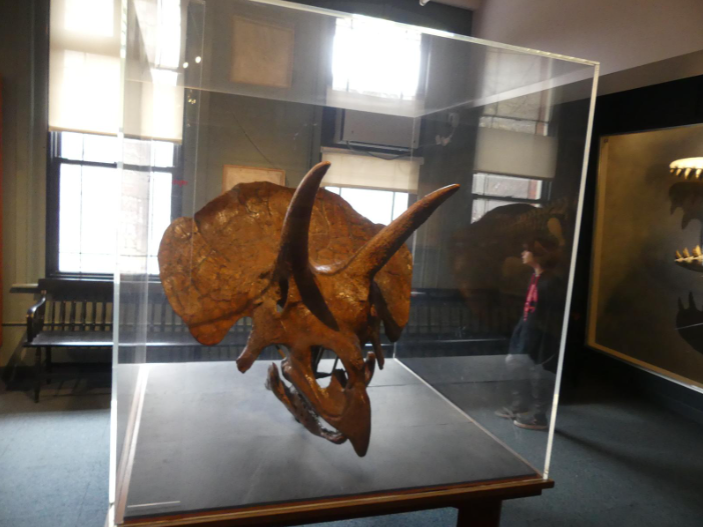
Chouaib Saidi also contributed to the article.
The Harvard Museum of Natural History is one of the few museums you can find at Harvard University. The Museum opened in 1998, and since then it has had around 250,000 people a year visit to lay eyes on the museum’s artifacts. Students at MHS can visit for free by heading to the library and asking for a ticket. The only thing you’ll need is your student ID, as proof, you are an MHS student.
To get to the museum, head to Malden Center, take the Orange Line towards Forest Hills to Downtown Crossing, and from there, take the Red Line heading to Alewife to Harvard station. Then take a little walk through the Harvard Campus, past the statue and Science Center, and you’re there.


(LEFT) Statue of British minister John Harvard. (RIGHT) Map of the Harvard Museum of Natural History CHOUAIB SAIDI
When you enter the museum, you are given a map when you acquire your ticket. The first thing on the map is the minerals exhibit. The exhibit is filled from top to bottom with different types of minerals on display. Some minerals like small samples of gold come in unique shapes and sizes. Some are rocks with gold attached to them and others are almost web-like shaped gold. One of the main attractions put on display in the mineral exhibit was the 1,600-pound amethyst. The amethyst is the biggest rock in the exhibit, on the outside, it looks like a normal boulder but it was carved open to show the inside. On the inside, the rock is a very rough, spiky texture with purple crystals.


(LEFT) Pieces of gold in the rocks/minerals category of the museum. (RIGHT) Giant Amethyst rock. CHOUAIB SAIDI
Deeper in the museum you’re greeted by human skeletal systems compared to chimpanzee skeletal systems to show the evolution of mankind. It’s fascinating to see how similar the human skeleton is to a chimpanzee’s skeleton. There is a board behind the models that explain, where we came from, what germs kill us, and the similarities between the behavior of a chimp and humans.


(LEFT) A human skeleton and a chimpanzee skeleton. (RIGHT) Skeletal model of a prehistoric creature. CHOUAIB SAIDI
Next in the museum is the dinosaur section. In this exhibit is the skeletal structure of a giant dinosaur that appears to have the ability to swim and a triceratops head. It’s good to learn about the past and how there were giant creatures of unknown ability roaming the earth. Their extinction still remains in question, scientists are still working to find the real truth of what happened.


(LEFT) Triceratops head model. (RIGHT) Shark model placed in a fake aquarium at the museum. CHOUAIB SAIDI
Near the end of the museum, there is a giant artificial ocean diagram that has shark models and a representation of what it would look like in the ocean. Overall the museum was very interesting and definitely worth checking out.




